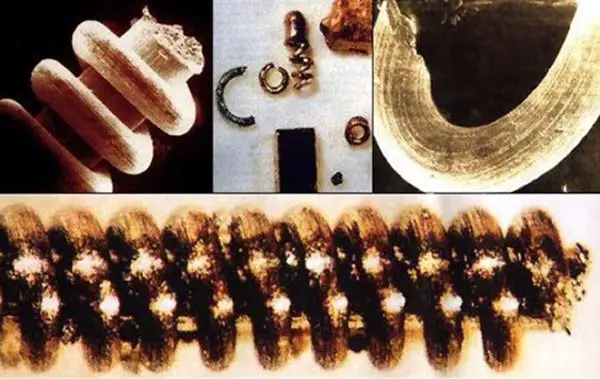In the annals of archaeology and history, few topics provoke as much fascination and debate as “out of place artifacts” (Ooparts). These enigmatic objects, found in contexts that seem to defy the established timeline of human technological progress, challenge our understanding of history and science. Among the most intriguing examples are the tiny, coil-shaped artifacts discovered along Russian river banks in 1991. These objects, potentially dating back to between 20,000 and 318,000 years, resemble components akin to modern nanotechnology—raising questions about the capabilities of ancient civilizations or even the possibility of extraterrestrial visitors.
The Discovery of the Century: Nanotechnology from the Distant Past?
Imagine the bewilderment of researchers conducting geological surveys in the Ural mountains when they stumbled upon hundreds of minuscule, intricately designed coils buried deep within the earth. Ranging in size from 1/10,000th of an inch to 1.18 inches, these artifacts were made from materials such as copper, tungsten, and molybdenum. Their sophisticated design and construction led to a heated debate within the scientific community and beyond. Could these artifacts be evidence of a technologically advanced society existing on Earth hundreds of thousands of years ago?

A Challenge to Mainstream Science
The existence of these coil-shaped objects poses a significant challenge to mainstream scientific narratives. Our current understanding of human history does not accommodate the possibility of advanced technological societies existing in the Pleistocene era. Mainstream science maintains that, 300,000 years ago, humans were only just beginning to master the use of fire. Yet, these artifacts suggest a level of technological sophistication far beyond what is believed possible for that time.

Skepticism and Speculation
Critics argue that these artifacts could be debris from modern activities, perhaps linked to the Plesetsk space station. However, research conducted by the Moscow Institute and corroborated by facilities in Helsinki and St. Petersburg has firmly dated these objects to a period long before modern industrial activities began. This has only fueled further speculation and interest, with theories ranging from the remnants of a lost civilization to evidence of alien visitation.
The Legacy of the Find and the Quest for Answers
Despite the death of Dr. Johannes Fiebag, a principal researcher of these artifacts, in 1999, the mystery surrounding these objects continues to captivate. They remain a potent reminder of the limits of our understanding of human history and the potential for groundbreaking discoveries that challenge our fundamental assumptions.
Conclusion: The Significance of Ooparts in Modern Science
The discovery of Ooparts like the Ural mountains artifacts underscores the importance of keeping an open mind in scientific inquiry. They remind us that history is not always linear and that our understanding of the past is constantly evolving. Whether these objects are evidence of ancient human ingenuity, alien intervention, or something else entirely, they represent a fascinating puzzle that continues to intrigue researchers and the public alike.
5 Engaging FAQs
- What exactly are out of place artifacts (Ooparts)? Ooparts are objects found in archaeological or geological formations that appear to be too advanced for the time period in which they were created.
- How old are the coil-shaped artifacts found in Russia? The artifacts have been dated to be anywhere between 20,000 and 318,000 years old, based on the depth at which they were found and their material composition.
- Could these artifacts simply be modern debris? Although this theory has been proposed, extensive testing and analysis have dated the objects far beyond the reach of modern industrial activity, negating the possibility that they are recent debris.
- Why are these artifacts significant? They challenge the current narrative of human technological progress and open up possibilities for reinterpreting ancient history, potentially indicating advanced ancient civilizations or extraterrestrial contact.
- What happened to the research on these artifacts? Although research has slowed, especially after the death of Dr. Johannes Fiebag, the artifacts continue to be a subject of interest and speculation among both the scientific community and the public.


